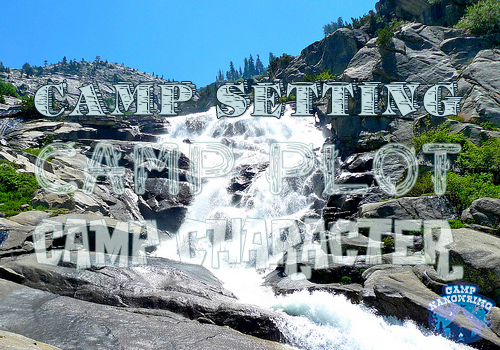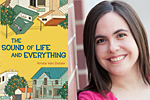Choose Your Camp: 5 Ways to Bring Place and Time Alive

Camp NaNoWriMo begins in April! In the spirit of friendly camp competition (and inspired by one of our favorite scenes in Scott Westerfeld’s Afterworlds), we asked our friends to Choose Your Camp. Krista Van Dolzer, author of The Sound of Life and Everything and Don’t Vote for Me, makes the final case for Camp Setting… and just why time and place can be so crucial:
When you list the elements that every story has to have, setting is probably the last one on your list. But just because setting doesn’t feel like the most important element doesn’t mean it’s not important. An intriguing setting can tip a book from good to great.
Now, I’m a reader who skims over lengthy paragraphs of description and a writer whose first drafts are more like a skeleton than a living, breathing thing. Still, I’ve come to appreciate a well-crafted setting, which includes both place and time.
PlaceYou have to set your story somewhere, but the best writers set their stories purposefully, then let those settings become characters in their own right. Stephanie Perkins’s Anna and the French Kiss would have been a lot less intoxicating if it had been Anna and the Milwaukee Kiss. (Not that I have anything against Milwaukee! It’s just not as magical as Paris.)
And the world in Robert Jordan and Brandon Sanderson’s Wheel of Time series was so richly drawn that, by the time I finished, I felt as if I’d actually been to Tar Valon and Bandar Eban.
TimeSome stories come with built-in eras—for obvious reasons, Elizabeth Wein’s Code Name Verity and Anne Blankman’s Prisoner of Night and Fog had to be set during or just before World War II—but other stories allow more freedom.
The early Victorian era definitely added to the creepiness of Jonathan Auxier’s The Night Gardener while Beth Kephart’s Small Damages made use of an ambiguous time period to give her contemporary story a sense of timelessness. (For the record, Small Damages
, which is set on a bull ranch in southern Spain, is also an excellent example of place.)
Last but not least, a few tips to send you on your way:
Include sensory details to breathe life into your setting. What does the dock sound like? What does a busy street smell like?Every time you go back to a location, make sure to up the ante. School stories, for instance, are going to reuse locations, so every time your characters go back to, say, the cafeteria, give them something new to do.Use specific words to build your world. If your book is set in Utah, don’t call it a soda when you could call it a pop (and if your book is set in Alabama, don’t call it a pop when you could call it a coke). Similarly, if your book is set in 1893, don’t call it a bathroom when you could call it a water closet.Research, research, research. Even if you’re building a new world, rooting it in something real—like an ancient empire or a twenty-first-century metropolis—will give your made-up world more weight.Know your world so well that, for every detail you include, there are four or five more details you could have included but chose not to. You can’t know which details are most important unless you know some of the ones that aren’t.Now get in there and nail your setting!

Krista Van Dolzer is a stay-at-home mom by day and a children’s author by bedtime. She lives with her husband and three kids in Mesquite, Nevada, where she watches too much college football and looks for her dead people online. She’s the author of
The Sound of Life and Everything
(G.P. Putnam’s Sons Books for Young Readers, May 2015) and
Don’t Vote for Me
(Sourcebooks Jabberwocky, August 2015).
Top photo background by Flickr user A Walker in LA.
Chris Baty's Blog
- Chris Baty's profile
- 62 followers



